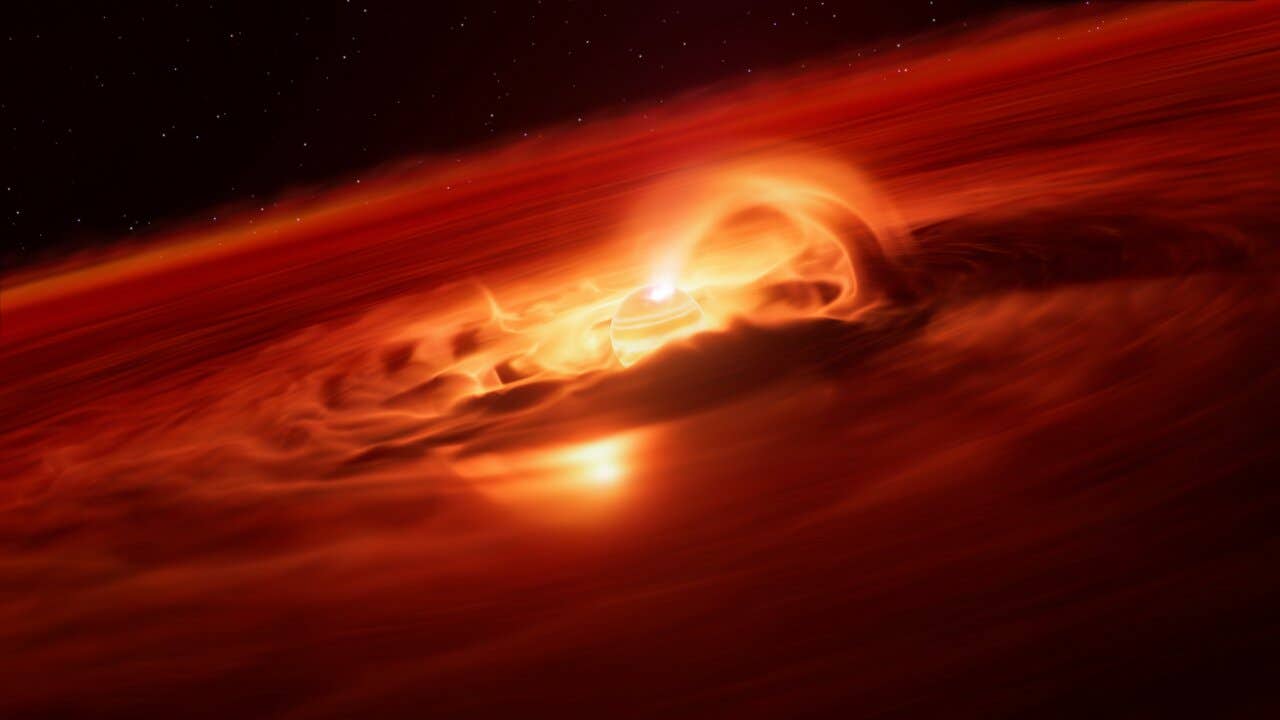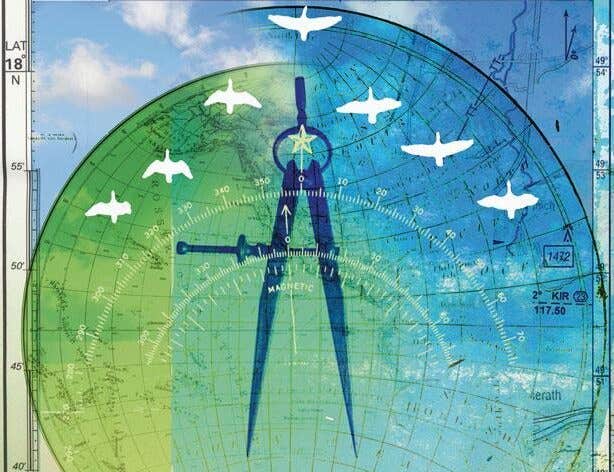Rogue planet caught in massive growth spurt, shocking astronomers
A rogue planet stunned astronomers with a record-breaking growth spurt, revealing star-like behavior in a planet 5 to 10 times Jupiter’s mass

Illustration of the rogue planet Cha 1107-7626. (CREDIT: ESO)
Astronomers observed something incredible in a region that not much was expecting—a planet-scale object drifting alone in space then burst into fiery life in a violent outburst of development.
The object, officially named Cha J11070768-7626326 or simply Cha1107-7626, is approximately five to ten Jupiter-masses in size and drifts alone unattached to a star. But in mid-2025 it burst in what astronomers call an accretion burst, a temporary but explosive increase in how fast it's burning gas and dust from its disk.
The event, still ongoing, is the first of its kind ever observed in a planet-mass object. For scientists, it's a discovery that redefines what you might think of as the chasm between stars and planets.
A Burst Beyond Expectations
Accretion bursts usually happen with young stars or brown dwarfs. This is not what occurred here. From April to August 2025, telescopes on Earth and in space watched as Cha1107-7626 brightened by up to six times in visible light. At peak, the object was accreting matter at a rate of six billion tons per second—a record for most powerful accretion ever detected from a planet-mass body.
This is the most powerful accretion event ever witnessed for a planet-mass object," said Víctor Almendros-Abad of Italy's National Institute for Astrophysics. "People may have notions of planets as being serene and peaceful worlds, but with this discovery we understand that planet-mass objects floating naked in space are exciting places too."
Watching the Fireworks
The fireworks were first picked up by the Very Large Telescope of the European Southern Observatory in Chile. With its X-shooter spectrograph, astronomers found an outburst of light in late June. The James Webb Space Telescope then found the outburst in its close-up observations over wavelengths from 0.6 to 12 microns.
Measurements indicated that the mass accretion rate had shot up six to eight times greater than previously. This rise is comparable to what occurs in far larger young stars. The signatures were unmistakable: powerful and broadened hydrogen emission lines, magnetic field-guided funneling gas, and eruptions of energy radiating throughout the spectrum.
Most surprising to scientists was the way the event changed the chemistry of the disk surrounding it. Water vapor appeared for the first time, an occurrence that previously seemed only in stars. Methane and ethylene features, observed in 2024, shifted notably during the outburst, suggesting the burst had warmed the disk enough to change its composition.
Not everything changed, though. Silicate dust characteristics remained the same, meaning that certain parts of the disk were resistant to the upset. This mix of change and stability gives us new information about how such planets form.
Melting the Distinction Between Stars and Planets
The finding fuels an old debate: are free-floating planets formed in the same fashion as stars, from clouds of gas that collapse, or giant planets that have been flung from their home systems?
"How rogue planets form remains an open question: are they lowest-mass objects formed like stars, or are they ejection giant planets from their place of formation?" co-author Aleks Scholz of the University of St Andrews in Scotland queried.
The presence of accretion behavior so similar to young stars in Cha1107-7626 is assumed to have the same formation process. "This discovery smudges the line between planets and stars and gives us an early glimpse of the rogue planets' formation periods," wrote St Andrews astronomer Belinda Damian.
A Familiar Pattern in a Strange Place
The outburst continued every two months or so, lighting up the object by nearly two magnitudes in visible light, and enhancing accretion rates by about a factor of seven. These are the characteristics of EXor-type outbursts—named after the star EX Lupi—that occur in young star systems. For the first time, astronomers can now confidently say that a planet-sized object can cause the same violent bursts of growth as stars.
Amelia Bayo, an astronomer with the European Southern Observatory, summed it up in one sentence: "The fact that a planet object can behave like a star is surprising and encourages us to wonder what other worlds will be like in their early stages."
Cha1107-7626 is about 620 light-years away from us in the Chamaeleon constellation. Were 2016 high accretion rates a burst phenomenon, it might go through these bursts of activity over decades or years. Already, astronomers are preparing for long-term monitoring with the upcoming Extremely Large Telescope and the James Webb Space Telescope, which will be able to spot many more of the scarce rogues.
For the moment, Cha1107-7626 is the smallest object ever detected in an accretion burst. And its outburst puts the conventional idea of stars and planets living on different worlds to shame.
Practical Implications of the Research
The finding gives you a fresh spin on watching the early days of planetary and stellar life. By showing that even planets as large as worlds can have the same violent growth bursts as stars, scientists may be pushed to reevaluate how planets, brown dwarfs, and stars form and evolve.
The outcome also reveals how bursts of accretion alter disks' chemistry, which may assist in defining the settings in which planets will form in the future.
Equipment like the Extremely Large Telescope will make these nomadic, rogue worlds easier to find, and researchers will be able to reconstruct the origins of rogue planets and the diversity of systems beyond our own.
Research findings are available online in The Astrophysical Journal Letters.
Related Stories
- Exoplanet TRAPPIST-1e may hold Earth-like atmosphere, JWST finds
- Astronomers discover a newborn gas-giant exoplanet circling a young 5 million-year-old star
- Exoplanets may capture dark matter and collapse into black holes
Like these kind of feel good stories? Get The Brighter Side of News' newsletter.
Mac Oliveau
Science & Technology Writer
Mac Oliveau is a Los Angeles–based science and technology journalist for The Brighter Side of News, an online publication focused on uplifting, transformative stories from around the globe. Passionate about spotlighting groundbreaking discoveries and innovations, Mac covers a broad spectrum of topics—from medical breakthroughs and artificial intelligence to green tech and archeology. With a talent for making complex science clear and compelling, they connect readers to the advancements shaping a brighter, more hopeful future.



